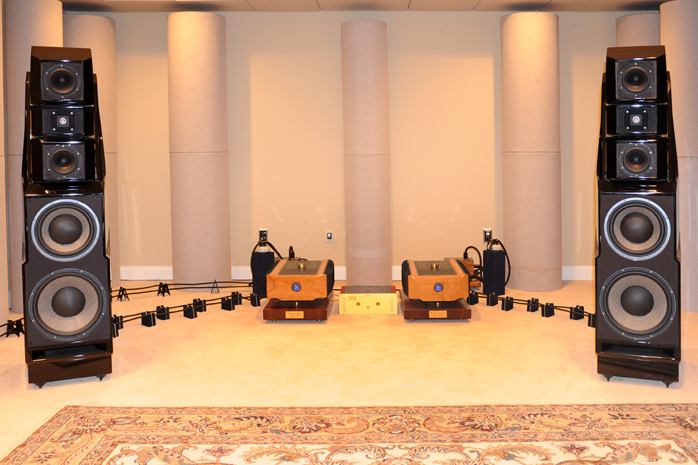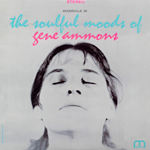This review page is supported in part by the sponsors whose ad banners are displayed below |
 |
 |
Quibbles. The list of review complaints can sometimes give insight as to the reviewer’s overall satisfaction. In Tenor’s case the quibbles were minor. Admittedly I am prejudiced in favor of the VTL 7.5 remote control. It is heavy, has non-slip buttons and is physically imbalanced so that when you pick it up in the dark, you always know which way to point it. It also has a wide beam angle. There is nothing wrong with Tenor‘s remote. The polished button clusters are logical but sometimes my clumsy man fingers slip off the intended button in the dark. The beam angle is narrower, meaning I have to more accurately aim the remote. It’s physically beautiful but perhaps a little too much form over function. There is also a small delay when activating the controls. This might bother impatient users. The delay is intentional but can possibly be addressed by a future software update. Finally for my aging eyes the volume control display figures are slightly too small sitting ten feet away. Again I am spoiled by the VTL’s display. To be honest, I’ve struggled to identify even these small nits.
|
 |
Sound. I had significant time to consider my sonic expectations and I’m not going to kid you. I expected something special from Tenor and not to drag out the suspense, the Line1/Power1 delivered. There are many high-spec preamps on the market and the sonic bar has been raised with new super preamps from Lamm, Constellation and others. I include my personal reference the VTL 7.5 especially with NOS Mullards in their club. While I expected superior performance from the Tenor, I was unprepared for the magnitude. Without for example a Lamm Signature ll side by side, my statement is certainly subjective and conditional. But I’ve auditioned enough preamps in my systems over the years to recognize excellence when I hear it. So let’s begin.
|
I had not critically listened during the break-in period in our dedicated room. I just played a break-in disc in the background and aside from meaningless show room demos, I’d never heard the Line1/Power1 prior to this assignment. The first drop of the needle into Illinois Jacquet’s Illinois Jacquet [Columbia, Classic Reissue] was met with stunned silence by myself and my wife. Clearly something really different was going on. I heard new textures, decay and detail from a source I knew intimately. Immediately evident was a clean relaxed purity with absolutely no whiteness, hardness or artificial excitement which is sometimes present in ultra-high resolution gear. This was high resolution with a natural musical flow that appeared to have the sound of neither tubes nor transistors.
|
|
|
|
 |
There was an immediate and dramatic sense of involvement with the sound existing in space as opposed to emanating from a speaker. The ability to flesh out individual images is a baseline requirement for any aspiring high-end component. What separates outstanding from merely good is the ability to maintain these images during complex dynamic music. As complexity increases, lesser components either smear the images, blend them into a homogenous goo or present a strident outline devoid of heart and soul. The Line1/Power1 presented images with depth, air and layering that for fleeting moments strayed into the believability of live music.
Let’s address the superlatives now. No one wants to write or read a boring tome that numbs the reader with a constant flow of praise. But there is a problem. The Tenor is that good. With that disclaimer out of the way—rave alert!—let’s look deeper.
|
|
|
Bass. With my moderately large listening room built with the Acoustic Science ISO Damp wall system and full tube trap treatment, I enjoy outstanding bass performance with depth, articulation and smoothness. In short, the room can take and accurately present anything the system might throw at it. To my ears the bass performance is well defined and stable despite a variety of components and music. Therefore it was a surprise to hear the significant improvements brought forth by the Tenor.
|
 |
| |
 |
In "Way Down Deep" from The Hunter [Jennifer Warnes, Cisco] it was as though the room expanded into a subterraneous cavern and the entire space filled with an expanding bubble of low energy, powerful and deep. Rich nuances previously buried were now easily defined with bass that was taut, quick and fully integrated with the musical event without a touch of boominess. Those familiar with Magico speakers know them to have a very quick fast and well-defined bass structure that’s almost electrostatic in speed. The Line1/Power1 added a touch of this Magico ‘sound’ to the low-end mix. It was deeper, richer, quicker and with a better pitch definition than I’d ever heard. I know it’s odd attaching these qualities to a preamp but these changes were real and quite audible. |
|
While treble can be tamed by judicious use of curtains and room furnishings, deep accurate bass requires many acoustic elements to be just right. The size of the room, dimensions, construction, speakers, power and room dampening are just a few of the factors that must be controlled. .
|
| All of it is expensive and somewhat difficult to achieve. I contend that most audiophiles have never heard correctly reproduced bass. When a preamp appears to materially improve the low end in a properly set-up dedicated listing room, you thus have something quite unusual. With some of my best go-to infrasonic recordings like Morph the Cat [Donald Fagen, Reprise] or "Take the A Train" from Soular Energy [The Ray Brown Trio, Pure Audiophile], the results were consistently clean and powerful with seamless coherence between the mid and low bass. The big bass started clean and tight and then extended into the most powerful low-end I have ever heard, delivering a texture and definition that was astonishing. |
|
|
|
|
|
Harmonic textures. This is where Tenor literally shines. The harmonic structure, spatial cues, resolution and liquidity painted stunning realism. Regardless of the recording, this listener was struck by clarity and nuance, immersing him into a visceral connection with the music with unmatched transparency. The tonal colors were vivid and the natural decay explicitly striking - a comment noted not just by myself but other listeners as well. Sometimes the absence of a negative can tell you much and with the Tenor there was a striking lack of artificial or mechanical reproduction. At times, high resolution leads to an artificial presentation.
|
 |
The sax of Gene Ammons on The Soulful Moods of Gene Ammons [Analog Productions] is a perfect example. It has clarity, weight and texture. It was stripped bare of distortion and grain, leaving only a startlingly clear and emotional presentation. The sax had almost fleshy realism and combined with the piano offered an uncanny sense of vividness without enhanced brightness. The harmonic richness and purity presented newly discovered information and detail in this familiar recording, displaying detail without being the least bit threadbare and cold. As discussed before, Tenor does not seek to eliminate all distortion but manages it so our hearing process ignores it. This creates a sense of realism that transcends the usual sonic checklist. Tenor’s purity transforms the musical experience and presents the music with a spectacular tonal color palette which isn’t artificially enhanced and presented with proper balance and density.
|
|
With regard to these harmonic textures, my long-term listening notes were peppered with "purity," "natural" and "non-fatiguing". This extraordinary purity combined with vanishingly low levels of grain and distortion allowed the Line1/Power1 to virtually disappear. But resolution and harmonic purity would be nothing more than an audio footnote unless they enhanced the emotion, drama and intensity of the musical experience. The intangible ‘goose bump’ experience is what connects me to the soul of the music. The Line1/Power1 pulled me into an emotional experience where I could lose track of time and feel drained in a joyous positive spirit. One connects with the music in a way that is almost intoxicating, joining heart, soul and mind without compromising any of them.
Tenor immerses you in the ambience of the recording session from a small café to the largest symphonic hall. Studio recordings were clean and precise, offering an almost visceral connection to the artist in the studio. There was beauty and aliveness to connect with. It moved the barrier one step closer to the real thing. You sense less that you are really looking at a high-resolution photograph rather than the real thing. The Line1/Power1 is one of those exceptional components which disappear from the chain, allowing your brain to turn off and your mind to wander. You flow deep into the music and float along with the experience totally removed from the drudgery of daily life. It’s a subconscious experience with subtle cues drawing you in more deeply.
|
 |
  |
 |
|